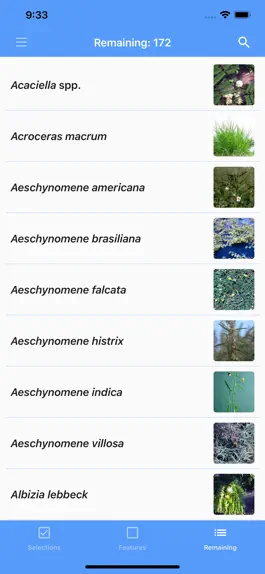Tropical Forages Взлом 0.2.2 + Чит Коды
Разработчик: LucidMobile
Категория: Справочники
Цена: Бесплатно
Версия: 0.2.2
ID: com.lucidcentral.mobile.tropical-forages
Скриншоты



Описание
Forecasts predict that global demand for meat, milk and eggs will double by 2050, with the largest increases being in developing countries. That scenario cannot eventuate without at least a parallel increase in availability of quality animal feed. Forages, be they from short term or permanent pastures, from conserved hay or silage, or sourced from cut and carry systems, are usually the most cost-effective option to meet feed demands in ruminants and even in pig and poultry production. They are also central to the ever-increasing “sustainable intensification” of mixed crop-livestock systems where they underpin livestock production and can provide ecosystem services including replenishment of soil nutrients, particularly nitrogen, improved soil health, pest control and reduced soil erosion.
Unlike the roles of forages in temperate farming systems, forage species that might be best in particular tropical and subtropical farming systems, and how they might be used, is a relatively new area of science, which has grown from its infancy in the mid-20th century. Also unlike in temperate systems, where relatively few species of grasses and legumes are used, over 150 species of tropical and sub-tropical grasses and legumes have been recognised as having potential production or environmental value.
Despite the growing demand for livestock products and feed options to underpin that growth, many national and international institutions across the globe have severely reduced investment in tropical and subtropical forage research. Consequently, there is an alarming worldwide shortage of expertise in tropical and subtropical forage adaptation and use to help interpret the wealth of information on adaptation, potential use, and value of this large number of species accumulated over 70+ years.
Tropical Forages: an interactive selection tool
This tool was developed as a means of capturing the expertise of experienced, often retired, forage specialists from across the globe and presenting it in a structured way that can guide a new generation of researchers, advisors, development specialists and conversant farmers to make informed choices of species and genotypes for particular environments and farming systems. The initial version of this tool was released in 2005 via CD-ROMs and the internet. Since then it has become recognised as the preeminent resource for information on 180 tropical and sub-tropical forage species, their adaptation and potential use. The tool has been extensively used by the above group as well as educational institutions around the world, with an average of 500,000 website visits per year.
This new version includes both new forage knowledge assembled since 2005, and importantly, brings the tool up-to-date with the 2019 IT environment of smart phones and mobile devices. It remains an open-access, online, expert knowledge system created by a team of highly experienced international forage specialists between 2000 and 2005 and totally revised during 2017-2019.
Unlike the roles of forages in temperate farming systems, forage species that might be best in particular tropical and subtropical farming systems, and how they might be used, is a relatively new area of science, which has grown from its infancy in the mid-20th century. Also unlike in temperate systems, where relatively few species of grasses and legumes are used, over 150 species of tropical and sub-tropical grasses and legumes have been recognised as having potential production or environmental value.
Despite the growing demand for livestock products and feed options to underpin that growth, many national and international institutions across the globe have severely reduced investment in tropical and subtropical forage research. Consequently, there is an alarming worldwide shortage of expertise in tropical and subtropical forage adaptation and use to help interpret the wealth of information on adaptation, potential use, and value of this large number of species accumulated over 70+ years.
Tropical Forages: an interactive selection tool
This tool was developed as a means of capturing the expertise of experienced, often retired, forage specialists from across the globe and presenting it in a structured way that can guide a new generation of researchers, advisors, development specialists and conversant farmers to make informed choices of species and genotypes for particular environments and farming systems. The initial version of this tool was released in 2005 via CD-ROMs and the internet. Since then it has become recognised as the preeminent resource for information on 180 tropical and sub-tropical forage species, their adaptation and potential use. The tool has been extensively used by the above group as well as educational institutions around the world, with an average of 500,000 website visits per year.
This new version includes both new forage knowledge assembled since 2005, and importantly, brings the tool up-to-date with the 2019 IT environment of smart phones and mobile devices. It remains an open-access, online, expert knowledge system created by a team of highly experienced international forage specialists between 2000 and 2005 and totally revised during 2017-2019.
История обновлений
0.2.2
2020-07-08
Способы взлома Tropical Forages
- Промо коды и коды погашений (Получить коды)
Скачать взломанный APK файл
Скачать Tropical Forages MOD APK
Запросить взлом



